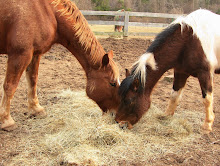“Your seat is your greatest aid in communicating with your horse,” says two-time Road to the Horse Champion and popular clinician Chris Cox of Mineral Wells, Texas. “Using your seat effectively can keep you from overusing your reins.
“As you begin refining your horsemanship, your first cue—whether you’re stopping, slowing or turning your horse—always should come from your seat, and then travel down and through your legs. Your hands should always give the lightest of your cues.”
As you fine-tune your seat position, keep your shoulders square and in line with your horse’s shoulders. Avoid unconsciously twisting your shoulders to one side, which puts you off balance. Remove items from your back pockets, which can also offset your balance. Breathe deeply and evenly to enhance your balance and stability.
Front-to-Back Positions
Your seat position influences your balance in the saddle; balance leads to control you can find your natural balance through proper seat position. You send your horse different messages. Depending on where you sit in the saddle from front-to-back.
Seat position #1:Slide forward so you sit toward the front of the saddle. This position frees your horse’s hindquarters

SEAT POSITION #2 JOHN BRASSEAUX PHOTOS
and encourages fast, forward movement.
Seat position #2: Sit in the center of the saddle seat upright on your seat bones, not rocked back on your pockets. This is how you should ride when you aren’t asking your horse for a change in pace or direction. Think “cruise control.”
Seat position #3: Simply move off your seat bones and roll your behind against the cantle so you’re sitting on your back pockets. Use this position only to stop or back your horse. As soon as

SEAT POSITION #3 JOHN BRASSEAUX PHOTOS
he responds, roll up to seat position #2, onto your seat bones. (If you stay in this position, you’ll irritate your horse’s kidneys and loin.)
Side-to-Side Positions
There are also three side-to-side seat positions: (1) centered; (2) weight on the left; (3) weight on the right. Ride in the centered position most of the time. To cue your horse to sidepass to the left, sit centered front-to-back in seat position #2, but put more weight on your right seat bone to “push” your horse left. To sidepass to the right, put more weight on your left seat bone.
Stay in Rhythm
As you ride, actively move your hips in a forward-and-back rhythm with your horse’s motion. Allow your lower back to roll slightly, and keep your upper body still.
Pick up a slow jog to see whether you’re moving in sync with your horse’s rhythmic motion. Don’t stiffen your back; keep it loose! Let your hips move in rhythm and absorb the shock.
from Loretta:
I LOVE that a well known western rider/trainer describes use of the seat this way. It is THE SAME for English riding. :)
from myhorse.com
Loretta
the natural horseman






